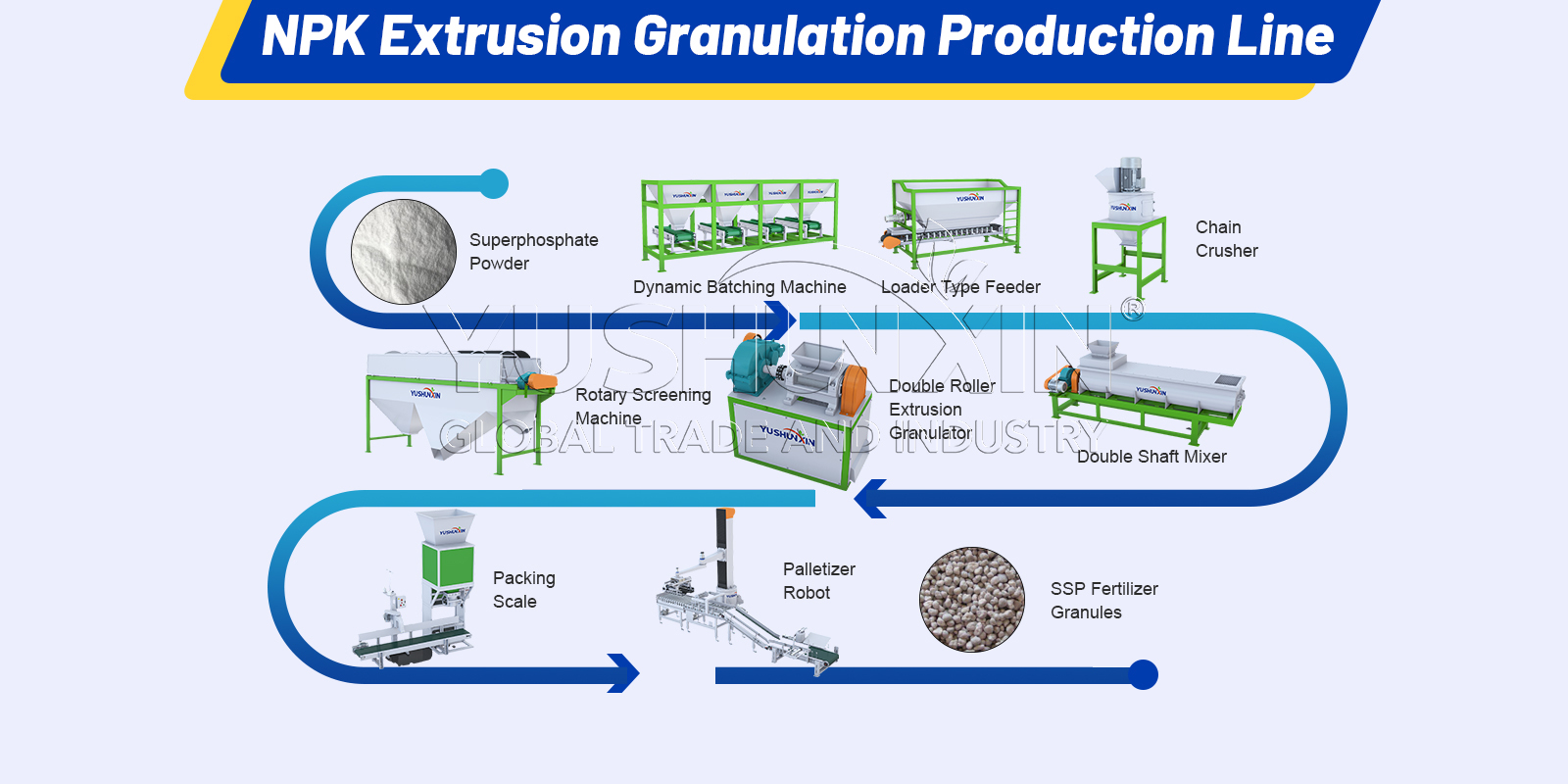The modern agricultural sector is continually seeking out more efficient and sustainable methods for producing fertilizer. Among the various technologies aiding this pursuit, the double roller granulator stands out as a pivotal machine for transforming raw materials into valuable, market-ready fertilizer products. In this blog, we’ll take a closer look at the double roller granulator, how it operates, and why it’s becoming an essential part of the fertilizer production process.
What is a Double Roller Granulator?
A double roller granulator is a type of dry granulation equipment commonly used in the fertilizer industry. It works on the principle of extrusion, where raw materials are compacted and squeezed between two rotating rollers to form granules of a specific size and shape. This process doesn’t require any drying or cooling phases, making it energy-efficient and cost-effective, particularly suitable for mass production of complex fertilizers.
How Does a Double Roller Granulator Work?
The core process of a double roller granulator working revolves around two parallel rollers that are equipped with molds or pockets on their surface. As the raw material is fed into the machine, these rotating rollers press the material into the molds, exerting high pressure that binds the particles together to form compacted granules.

The granulation process includes the following steps:
1. Material Preparation: Raw materials, typically powdery, are prepared by ensuring the correct particle size and moisture content for optimal granulation.
2. Feeding: The prepared materials are conveyed into the granulator’s hopper.
3. Granulation: As the material passes through the rollers, it is pressed into the roller molds, compacting the material into a dense, sheet-like form.
4. Size Reduction: The compacted sheets are then broken down into uniform granules using a crushing mechanism.
5. Screening: The resulting granules are screened to separate the desired size from any fine powder or oversized granules, which can be recycled back into the system.
6. Packaging: The final granules are collected and packaged for distribution and use.
Benefits of Using a Double Roller Granulator in Fertilizer Production
1. Energy Efficiency: The double roller granulator operates without the need for additional heat or humidity, reducing the overall energy consumption associated with the production process.
2. Cost-Effectiveness: With lower energy requirements and minimal maintenance, the production costs of fertiilizer are significantly reduced, resulting in a more economical operation.
3. Environmental Friendliness: This granulation method is environmentally friendly, as it produces minimal waste and does not involve any harmful emissions.
4. Versatility: The machine can handle a wide range of raw materials, including various chemical powders, minerals, and organic substances, making it versatile for different types of fertilizer production.
5. High-Quality Product: The granules produced are hard and uniform in size, contributing to a consistent and controlled release of nutrients when applied to the soil.
6. Continuous Production: Double roller granulators are designed for continuous operation, which is ideal for large-scale production requirements.
Applications in Fertilizer Production
The double roller granulator is commonly used for the production of both organic and inorganic fertilizers. It’s particularly effective for creating compound fertilizers with multiple nutrients that are essential for plant growth, such as nitrogen (N), phosphorus (P), and potassium (K). The machine can also be used to produce controlled-release fertilizers, enhancing their efficiency and reducing the risk of nutrient leaching.
Challenges and Considerations
While the double roller granulator offers numerous benefits, it’s important to carefully control the raw material properties, such as particle size and moisture, to ensure successful granulation. Operators must also monitor the roller pressure and clearance to maintain the quality of the granules. If you need more details, you can visit https://organicfertilizerproductionline.com/double-roller-granulator/
Conclusion
The double roller granulator is revolutionizing the way fertilizer is produced. By offering an energy-efficient, cost-effective, and environmentally friendly method of granulation, it provides the agricultural industry with a reliable solution for meeting the growing global demand for fertilizers. As we continue to advance in technology and innovation, the double roller granulator remains a critical component in the journey towards sustainable agricultural practices and increased food security.